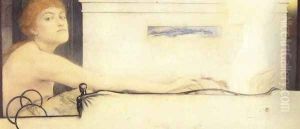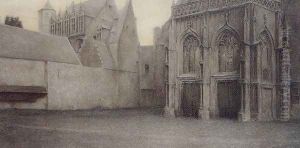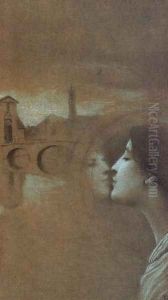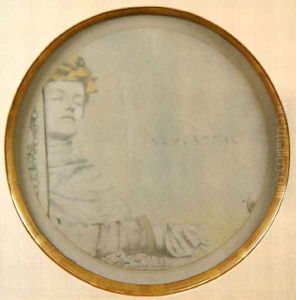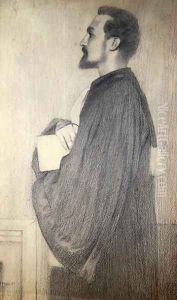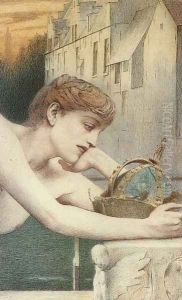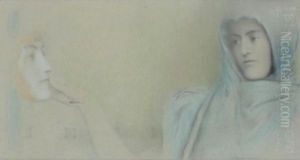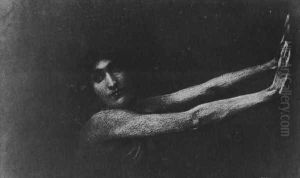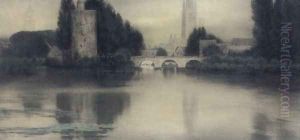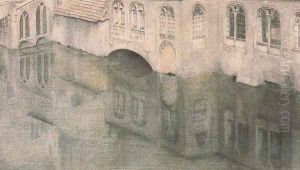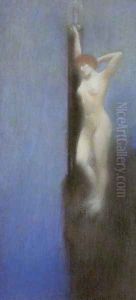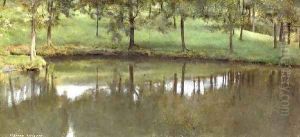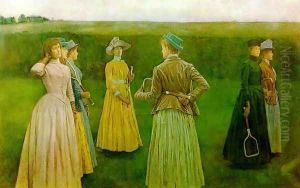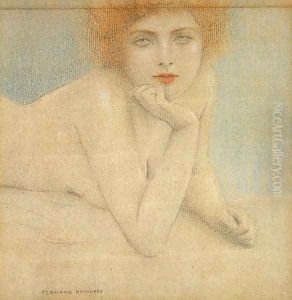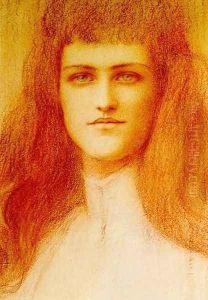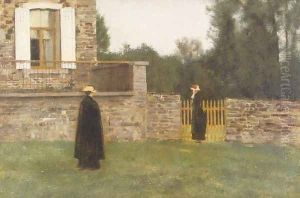Fernand Khnopff Paintings
Fernand Khnopff was a Belgian symbolist painter, sculptor, and graphic artist whose work is often associated with the aesthetic and intellectual movements of his time, such as symbolism and decadence. Born on September 12, 1858, in Grembergen, Belgium, Khnopff was raised in a cultured environment that fostered his artistic inclinations. He studied law at the University of Brussels but soon abandoned this path to pursue art, enrolling at the Académie Royale des Beaux-Arts in Brussels.
In the early phase of his career, Khnopff was influenced by the realism of Gustave Courbet and the plein-air painting of the French Barbizon school. However, after a trip to Paris in 1877, where he encountered the works of the Pre-Raphaelites and the aesthetic movement, his style began to evolve. He also became influenced by British artists such as Edward Burne-Jones and James McNeill Whistler, whose works he encountered during his frequent travels to London.
Khnopff's art is characterized by a refined, dreamlike quality, with an emphasis on mystical themes, idealized figures, and a sense of melancholic introspection. His compositions often feature enigmatic female figures, landscapes with a sense of stillness and isolation, and the use of symbols to evoke deeper meanings. One of his most famous works is 'I Lock My Door Upon Myself' (1891), which is based on a poem by Christina Rossetti and showcases his symbolist approach with its enigmatic subject and ethereal atmosphere.
Throughout his career, Khnopff remained an important figure in the symbolist movement, participating in exhibitions with other notable artists such as Gustave Moreau and Odilon Redon. He was a founding member of the group Les XX in Brussels, a collective that aimed to promote avant-garde art and challenge academic conventions. His work had a significant influence on other artists, including the Austrian symbolist Gustav Klimt.
Khnopff was also known for his meticulous approach to his work, often using photography as a tool to aid in the composition of his paintings. He lived a reclusive life, with his art serving as a primary means of communication and personal expression. Khnopff never married and spent much of his life in the company of his sister Marguerite, who served as the model for several of his paintings.
Fernand Khnopff died in Brussels on November 12, 1921. His legacy is preserved in the Symbolist movement and his influence can be seen in various forms of modern art. His works are held in many major museums around the world, and he is celebrated for his contribution to the development of early modernist aesthetics.



